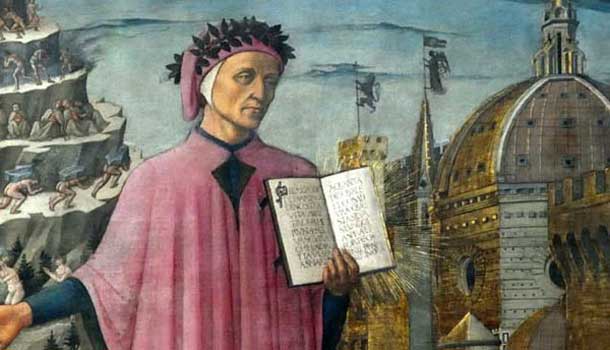
Mission statement by the editors
February 12, 2012
The Indispensable Palladio
February 14, 2012[three_fourth_last]
Sketching Brazilian Art
[/three_fourth_last]
[two_third_last]
Brazil’s vibrant and sophisticated contemporary arts scene rests on the foundation of a century’s search for the essence of the Brazilian identity.
[/two_third_last]
by Fernando AQ Mota.
[singlepic id=378 w=600 h=480 float=none]
[three_fourth_last]
Brazilian art has grabbed the attention of many international private and public collections in recent years. Along with economic growth and the country’s emerging role in the international political sphere, contemporary Brazilian art is currently a key element in the projection of a new identity towards the Western centres of power. If the Brazilian economy and politics are shifting to a more integrated relationship with Europe and the United States, then its culture is by no means falling behind. When it comes to art, the placement of Brazilian artists in important collections throughout the world, mega-exhibitions, and the increasing value of their works in auction houses in London and New York, are all clear examples of this new age.
In order to understand the dynamics of the contemporary art scene in Brazil, it is essential to look back to at least two main periods in the twentieth century: the Modernists in the 1920’s, and the Neoconcretes in the 1950’s and 60’s. Both movements were extremely detailed and complex, with extensive published material, so I am investigating here their broad outlines – mostly how they relate to contemporary art and what these three movements have in common, from the perspective of a local, so as to give the global reader an overall view of Brazilian art over the last hundred years.
Throughout the countries of Latin America, the turn of the twentieth century saw a need to create national identities and the desire to break away from the old traditions. A range of experimentations in literature and fine arts sprang up all over the region, such as the Muralismo movement in Mexico. In Brazil, the 1922 centenary of the country’s independence, there was the Semana de Arte Moderna (Modern Art Week) in Sao Paolo. This was the culmination of a series of events that was trying to raise national culture to a new level, and the city – with its intense influx of immigrants and its then-surging industrialization – was the perfect stage for it. Influenced by the European Modernist movements, Brazilian artists, writers, and musicians defied the rules of academism in their various art forms. In the poetry of Mario de Andrade and Oswald de Andrade, in the compositions of Villa-Lobos, in the sculptures of Victor Brecheret, new ideas for a more original society took form. The painter Anita Malfatti – author of the first controversial exhibition of Brazilian modernist art in 1917 – was the pioneer of modern painting in Brazil, along with Di Cavalcanti, Lasar Segall and Vicente do Rego Monteiro among others, exploring the techniques created by the European avant-garde and mixing them with visual elements derived from their national scenery.
[/three_fourth_last]
[nggallery id=58]
[three_fourth_last]
Tarsila do Amaral, in her famous work Abaporu (1928), captured the spirit of the time. It shows a human figure with abnormal disproportions: the right leg and right arm occupy almost half of the canvas. The lines and stance of the naked body, a swollen human form seated, its elbow resting on a knee and its hand holding its head, are clear signs of the impact of surrealism and cubism on the Brazilian art scene. The rest of the picture is made up of a cactus that is the same size as the figure, with a sun in a blue sky, reminding us of the landscapes to be found in parts of the Brazilian countryside. It is as if one of Rodin’s sculptures had been painted by Dali and had got lost under the tropical sun. Abaporu means “the man that eats” in the indigenous Tupi-Guaraní language. The painting was a gift to her then husband, Oswald de Andrade, who was then inspired to write the Manifesto Antropofágico (Anthropophagite Manifesto). In it, Andrade claims that Brazilian culture must consume and digest European culture in order to find its own pure Brazilian essence.
The attempt to construct an original Brazilian aesthetic in the early twentieth century continued developing into new forms, as the century unfolded. In 1959 in Rio de Janeiro, the poet Ferreira Gullar and the artists Lygia Clark, Lygia Pape, Amilcar de Castro and Franz Weissmann, among others published the Manifesto Neoconcreto (Neoconcrete Manifesto) as a specific reaction to the Concrete movement, which had been extant in previous years in Sao Paulo. While the Concretists defended an abstract art based on the geometric principles of the Bauhaus and the Russian avant-garde, some of the original members of the group disagreed about the orthodox path the movement was taking and joined up with other artists to establish a new doctrine. The Neoconcretists argued that they needed to break free from these rationalist dogmas. They argued that art should be more than mere perfect visual composition. It had to become more connected with the human being. Both movements were inextricably linked to the resurgence of Brazilian culture at the time, not only in arts but also in literature, cinema, design and music. This is the period of the Cinema Novo (New Cinema) with Glauber Rocha, the brooding sounds of Bossa Nova and the inauguration of the country’s new capital, Brasilia. Modernity seemed to have arrived at last. A new cultural heritage was about to be born.
The context was propitious for new experimentation. Concrete artists like Waldemar Cordeiro and Luis Sacilotto explored the numerous possibilities of the basic elements of visual forms; however, to be truly experimental, it was necessary to go beyond recycling European models. Neoconcretists reinvented the concept of art in Brazil. They literally played with the media. Lygia Clark’s Bichos (Animals) were interactive sculptures that relied on being touched by the public to become real artworks. Lygia Pape’s Livros (Books) brought the role of the space plays in our perception of objects into the artistic discourse. Finally, Hélio Oiticica joined the Neoconcrete movement and invited the spectator to “wear” the art in his works Parangolés, and to invade his art space by literally stepping into his installations Penetráveis (Penetrables). In the 1960’s, Oiticica’s pieces even influenced the cultural movement Tropicália, which revived the questions the Anthropophagite Manifesto had raised within music and poetry. This movement was actually named after one of the Penetráveis. The Neoconcretists succeeded in engaging the public with their artworks. They managed to show Brazilians that art was not something exclusively for the elite, but that it was actually part of everyday life. Art became more intimate, colourful, less cerebral and more intuitive – it became, once again, more Brazilian.
The Modernists introduced important elements to the visual vocabulary in the country, and later on the Neoconcretists – who some refer to as the inventors of post-modernism in Brazil – took national artistic creativity to even greater heights. These movements are the main platforms for Brazilian contemporary art. The decades following them showed a wide variety of styles and ideas in the use of media and language. Artists like Tunga, Cildo Meireles and Adriana Varejão updated the image of Brazilian art in national and international spheres by introducing aesthetics and conceptual aspects into their works. It came from blending historical artistic references in both Brazilian and Western iconographies and techniques, together with innovative ideas of how to analyze the complex structure of the contemporary world and its arts.
Beatriz Milhazes, Vik Muniz and Rivane Neuenschwander are among a long list of names that nowadays help to project Brazilian art as a thriving workshop, as cutting-edge, which maintains the same quality output as any other national art. The ability to reinvent its formats and to reorganize its ideas in accordance with the new movement in Brazilian society is the particulary efficient skill contemporary artistic practices in this country show they possess; Ernesto Neto’s large installations combine the instinctive Brazilian interest in textures, colours and smells – the human senses, basically – with studies of the relationship between the environment and its effects on the public’s involvement, found in Oiticica’s methods. In Neto’s endless labyrinths, made of nylon (The Edges of the World), one can feel like a contemporary Abaporu inside a new version of the Penetráveis. Here, art embraces the instincts in a very Brazilian way.
If the question of discovering the Brazilian identity is still unanswered, then, at the very least, the past artistic movements have lit the way. As a consequence, the country is striding more confidently into a new era, not only because of its recent success in the economic and political fields, but also due to its strong originality and weightier presence in contemporary culture. Although the comparison to global phenomena in the history of art always seem to bounce back, Brazilian contemporary art has discovered that the roots of ones heritage run deep, and the growth potential of this tropical tree is seemingly limitless. In the twenty-first century, labelling Brazil as an “emerging” art scene, or as an exotic backwater, is way out of date. The nation is gaining more than just space or respect. As its contemporary art unveils its attractive looks and witty sense of humour, Brazil is in a privileged position of offering people something that is more and more scarce nowadays: opportunities.[/three_fourth_last]



